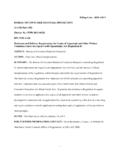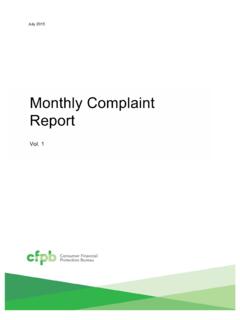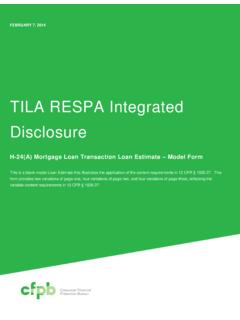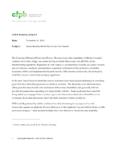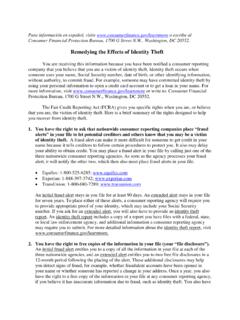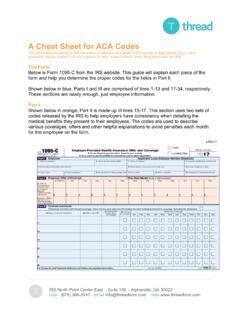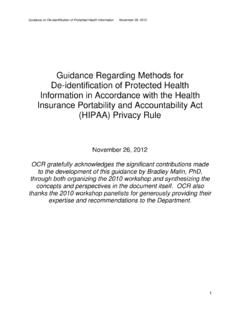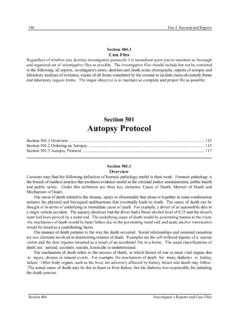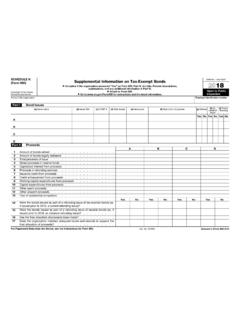Transcription of Ability-to-Repay and Qualified Mortgage Rule
1 1 APRIL 10, 2013 SMALL ENTITY COMPLIANCE GUIDE Ability-to-Repay and Qualified Mortgage Rule Please refer to our concurrent proposal about the changes we have proposed to this rule. This notice proposes to amend the final rule issued January 10, 2013, which is set to take effect on January 10, 2014. The Bureau is considering comments received and plans to finalize the proposal as soon as possible. 2 Table of Contents 1. Introduction.
2 5 I. What is the purpose of this guide? .. 7 II. Who should read this guide? .. 8 III. Who can I contact about this guide or the ATR/QM rule? .. 8 2. Overview of the Ability-to-Repay / Qualified Mortgage Rule .. 9 I. What is the ATR/QM rule about? .. 9 II. When do I have to start following this rule? .. 10 III. What transactions are covered by the ATR/QM rule? ( (a)) .. 10 IV. How long do I have to keep records on compliance with the ATR/QM rule? ( (c)(3)) .. 11 3. About Ability to Repay .. 12 I. What is the general ATR standard? (Comment (c)(1)-2) .. 12 II. What are the eight ATR underwriting factors I must consider and verify under the rule? (Comment (c)(2)-4) .. 12 III. How do I verify information I considered using reliable third-party records? (Comment (c)(3)-4) .. 13 IV. What is a reasonably reliable third-party record?
3 ( (c)(3)) . 15 3 V. How do I determine ATR? ( (c)(1)) .. 16 VI. Do loans originated under the general ATR standard have to comply with a debt-to-income (DTI) threshold? ( (c)(2)(vii))17 VII. What do I include on the income side of the debt-to-income ratio when determining ATR? .. 17 VIII. How do I calculate, consider, and confirm income, assets, employment, and credit history? .. 18 IX. What do I include on the debt side of the debt-to-income ratio when determining ATR? .. 20 X. How do I calculate, consider, and confirm debt information? .. 20 XI. Does the ATR rule ban certain loan features or transaction types?
4 ( (c)(2) and (5)) .. 23 XII. What happens if a consumer has trouble repaying a loan I originate under the general ATR rule? What happens if my organization violates the regulation? .. 24 4. About Qualified Mortgages .. 25 I. What is a Qualified Mortgage ? ( (e), (f)) .. 25 II. What is the difference between safe harbor and rebuttable presumption in terms of liability protection? ( (e)(1)) .. 26 III. What makes a QM loan higher-priced? ( (b)(4)) .. 27 IV. Are there different types of QMs? .. 27 V. Are there special requirements for calculating the DTI ratio on QM loans? ( (e)(2)(vi) and appendix Q) .. 30 VI. What are the QM points-and-fees caps and what do I include when calculating points and fees? ( (b)(1) and (e)(3)) .. 31 VII. Can I charge prepayment fees on a covered transaction?
5 ( (g)) .. 35 5. Refinancing from Non-Standard to Standard Loans: ATR Special Circumstance ( (d)) .. 37 4 I. Do the standard ATR requirements apply when I refinance consumers from a non-standard to a standard loan? ( (d)(1)(ii)(A)) .. 37 II. How do I calculate non-standard and standard payment amounts to determine whether the consumer s monthly payment on the standard Mortgage will represent a material decrease? ( (d)(5)) .. 39 6. Proposed Changes to the Ability-to-Repay / Qualified Mortgage Rule .. 40 I. Is the Bureau considering any proposed changes in the ATR/QM rule? .. 40 7. Practical Implementation and Compliance Considerations.
6 42 8. Other Resources .. 45 I. Where can I find a copy of the ATR/QM rule and get more information about it? .. 45 5 1. Introduction During the years preceding the Mortgage crisis, too many mortgages were made to consumers without regard to the consumers ability to repay the loans. Loose underwriting practices by some creditors including failure to verify consumers income or debts and qualifying consumers for mortgages based on teaser interest rates after which monthly payments would jump to unaffordable levels contributed to a Mortgage crisis that led to the nation s most serious recession since the Great Depression.
7 In response to this crisis, in 2008 the Board of Governors of the Federal Reserve System adopted a rule under the Truth in Lending Act prohibiting creditors from making higher-priced Mortgage loans without assessing consumers ability to repay the loans. Creditors have had to follow these requirements since October 2009. In the 2010 Dodd-Frank Wall Street Reform and Consumer Protection Act (the Dodd-Frank Act), Congress adopted similar (but not identical) Ability-to-Repay (ATR) requirements for virtually all closed-end residential Mortgage loans. Congress also established a presumption of compliance with the ATR requirements for a certain category of mortgages, called Qualified Mortgages (QMs). In 2013, the Consumer Financial Protection Bureau adopted a rule that implements the ATR/QM provisions of the Dodd-Frank Act.
8 The ATR/QM rule is the subject of this guide. This rule generally applies to closed-end consumer credit transactions that are secured by a dwelling for which you receive an application on or after January 10, 2014. As you will see in reading this guide, the ATR rule describes the minimum standards you must use to determine that consumers have the ability to repay the mortgages they are extended. While the ATR rule provides eight specific factors you must consider (including verifications of income or assets relied on, employment if relied on, and review of credit history), the rule does not dictate that you follow particular underwriting models. The rule also contains special requirements for creditors that are refinancing their own customers into more affordable loans to help those customers avoid payment shock.
9 6 In addition to the general ATR requirements, the rule also defines the requirements for Qualified Mortgages and how QM status works if there is a question about whether a creditor has assessed the borrower s ATR. The rule provides a safe harbor for QMs that are not higher-priced. Loans that are higher-priced and meet the definition of a Qualified Mortgage have a different protection, that of a rebuttable presumption that the creditor complied with the ATR requirements. This guide explains the requirements for creditors to follow to determine whether the loans your organization originates meet the QM requirements and, if so, whether they will receive either a safe harbor or rebuttable presumption of compliance with the ATR requirements.
10 It also discusses the grounds for rebutting the presumption for higher-priced QMs principally, that the consumer s income, debt obligations, and payments on the loan and any simultaneous loans did not leave the consumer with sufficient residual income/assets left to live on. Qualified Mortgages have three types of requirements: restrictions on loan features, points and fees, and underwriting. One of the underwriting requirements under the general definition for Qualified Mortgages is that the borrower s total debt-to-income ratio is not higher than 43 percent. For a temporary, transitional period, certain loans that are eligible for sale or guarantee by a government-sponsored enterprise (GSE) such as the Federal National Mortgage Association (Fannie Mae) or the Federal Home Loan Mortgage Corporation (Freddie Mac) or are eligible under specified federal agencies guarantee or insurance programs will be considered Qualified Mortgages under a temporary definition.


